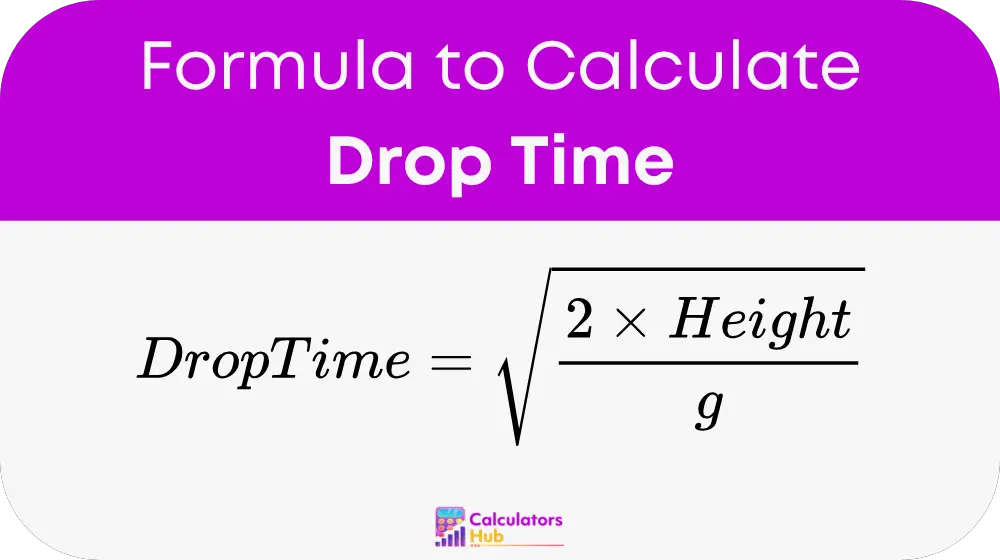The Drop Time Calculator helps you find out how long it takes for an object to fall from a certain height under gravity. It is mainly used in physics, engineering, education, and safety analysis. This calculator is based on the laws of motion and applies to situations where an object falls freely under gravity without resistance.
This tool belongs to the Physics and Motion Calculator category. It provides a fast and reliable way to calculate the time of free fall when the height is known. It is especially useful in science projects, experiments, and engineering applications.
The calculator works under the assumption that the object:
- Falls freely (without air resistance)
- Starts from rest
- Falls under the constant gravitational pull of Earth
This makes it ideal for educational use and basic physical modeling.
formula of Drop Time Calculator

Where:
Drop Time is measured in seconds
Height is the distance of the fall in meters
g is the acceleration due to gravity (9.8 m/s²)
Assumptions:
- No air resistance
- Free fall motion
- Initial velocity is zero
- Constant gravitational force of 9.8 m/s²
This formula is a simplified version of the second equation of motion and is widely used in theoretical calculations.
Drop Time Quick Reference Table
Below is a helpful table showing the drop time from various common heights:
| Height (meters) | Drop Time (seconds) |
|---|---|
| 1 | 0.45 |
| 2 | 0.64 |
| 5 | 1.01 |
| 10 | 1.43 |
| 20 | 2.02 |
| 30 | 2.47 |
| 50 | 3.19 |
| 100 | 4.52 |
| 200 | 6.38 |
| 500 | 10.10 |
These values give a quick idea of how long an object would take to fall, helping avoid manual calculation each time.
Example of Drop Time Calculator
Imagine you drop a rock from a height of 20 meters. You want to know how long it takes to hit the ground.
Use the formula:
Drop Time = √(2 × Height ÷ g)
Drop Time = √(40 ÷ 9.8) ≈ 2.02 seconds
So, the rock would take about 2.02 seconds to reach the ground.
This quick calculation helps estimate fall duration for different real-life scenarios such as dropped objects, rescue planning, or science experiments.
Most Common FAQs
No, this calculator only works under free fall conditions. Air resistance is not include in this formula.
Yes, but you must first convert feet to meters. 1 foot = 0.3048 meters.
Yes, it helps in basic planning where fall time matters, such as in construction site safety or object drop testing.